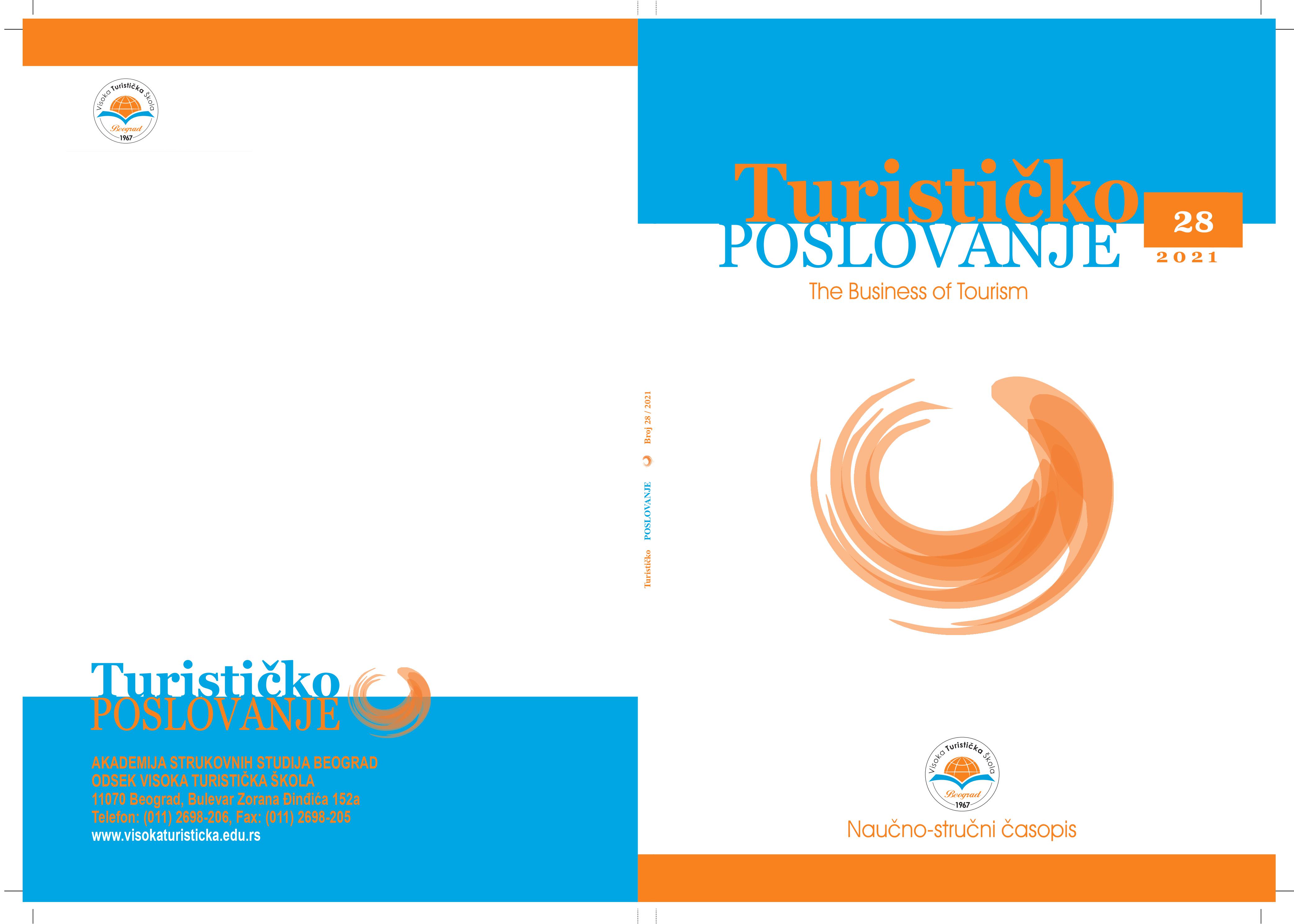USPORNI TURIZAM: TRŽIŠTE NIČA PREMA ODRŽIVOSTI KUĆE MJESECE FARME „BAROUK AREA“
Sažetak
Slow tourism is one of the new trending concepts that bring the concept of slowness into tourism practices in a way that tourists appreciate the local food, culture, heritage, and sustainability.
Destinations adopting principles of slow tourism may reduce the financial leakage of the suppliers and generate more income and employment to the locals. Thus, the case of ” Moonlight farm and Resort at Barouk“ area, the core topic for this study to understand the relation between slow tourism sustainable development, ecology, which has the roots in interest for locality, community, and green travel.
The main research question: “How can slow tourism be a tool of sustainable development?”. In order to answer this, a mixed-method approach conducted through the use of two questionnaires addressed to tourists visiting “Moonlight farm” and residents in Barouk area. Additionally, an interview with the owner would provide significant insight into the topic. The analysis of the results was beneficial in understanding the perceptions and motivations of tourists in which it helps promote slow tourism in this area.
Reference
Cohen, E. (2002). Authenticity, equity and sustainability in tourism. Journal of sustainable tourism, 10(4), 267-276.
Dall'Aglio, S., Nazzaruolo, A., & Zago, M. (2011). Guide lines for the development of the Slow Tourism project. Retrieved, 10(20), 2014.
Dickinson, J., & Lumsdon, L. (2010). Slow travel and tourism. Earthscan.
Georgic, G., Bulin, D., Dorobantu, M. R., Stefania, B., & Nistoreanu, P. (2013). Slow movement as an extension of sustainable development for tourism resources: a Romanian approach. In Proceedings of the Conference: 20th IBIMA Conference, Special Edition, Kuala Lumpur, Malaysia (pp. 25-26).
Georgica, G. (2015). The Tourist's Perception about Slow Travel–A Romanian Perspective. Procedia Economics and Finance, 23, 1596-1601.
Guiver, J., & McGrath, P. (2017). Slow Tourism: Exploração de discursos. Dos Algarves: A Multidisciplinary e-Journal, (27), 11-34.
Hobson, K., & Essex, S. (2001). Sustainable tourism: A view from accommodation businesses. Service Industries Journal, 21(4), 133-146.
Kaya, H., & Kurt, H. (2011). Contribution of concrete cultural constituents to the tourism potential of Safranbolu. Procedia-Social and Behavioral Sciences, 19, 225-230.
Lumsdon, L. M., & McGrath, P. (2011). Developing a conceptual framework for slow travel: A grounded theory approach. Journal of Sustainable Tourism, 19(3), 265-279.
Mohamad Noor, F. A., Nair, V., & Mura, P. (2015). Conceptualizing a framework for slow tourism in a rural destination in Malaysia. Advanced Science Letters, 21(5), 1185-1188.
Moira, P., Mylonopoulos, D., & Kondoudaki, A. (2017). The application of slow movement to tourism: is slow tourism a new paradigm? Journal of Tourism and Leisure Studies, 2(2), 1-10.
Molz, J. G. (2009). Representing pace in tourism mobilities: Staycations, slow travel and the amazing race. Journal of Tourism and Cultural Change, 7(4), 270-286.
Oh, H., Assaf, A. G., & Baloglu, S. (2016). Motivations and goals of slow tourism. Journal of Travel Research, 55(2), 205-219.
Presenza, A., Abbate, T., & Micera, R. (2015). The Cittaslow movement: Opportunities and challenges for the governance of tourism destinations. Tourism Planning & Development, 12(4), 479-488.
Schneider, S. (2008). Good, clean, fair: The rhetoric of the slow food movement. College English, 70(4), 384-402.
Sharpley, R. (2000). Tourism and sustainable development: Exploring the theoretical divide. Journal of Sustainable tourism, 8(1), 1-19.

